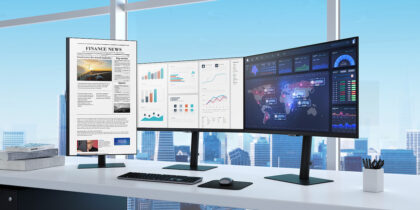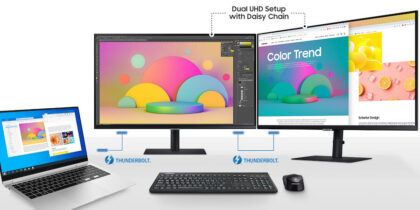Microsoft launched its powerful new operating system with a riddle: Why is the successor to Windows 8 not called Windows 9? Theories abound, but in the end, nomenclature isn’t important. From the enterprise point of view, what Windows 10 Pro can do matters more than what it’s called.
So, what can a Windows 10 tablet, notebook or 2-in-1 accomplish? There are a host of capabilities and features bound to capture the enterprise IT community’s attention. Here are four reasons to get excited:
1. Start Is Back
Have you missed the Start menu? If so, this will come as good news. Windows 10 Pro brings back this old favorite, and IT managers across the enterprise should heave a sigh of relief. Support is simpler, as people have the tools they know and like. The Start menu now offers easy access to commonly used apps, and the menu can be customized to add and remove apps or pin and resize tiles. It’s back, and it’s more powerful than ever. Adjust the menu size to tall, short, narrow or wide. Tweak the colors to suit your taste, and enjoy the return of this feature.
2. The Tablet-Laptop Continuum
Windows 10 Pro introduces a new feature called Continuum that adjusts the user experience depending on how a device is being used. This is key for enabling greater productivity on 2-in-1 devices, where users are transitioning from a laptop to tablet mode. When a user detaches their 2-in-1 device from its keyboard, they are prompted to switch to tablet mode. Onscreen features, including menus and taskbars, adapt for easy navigation. Continuum is a significant advance in delivering a seamless switch between laptop productivity and touch-screen mobility.
3. Getting an Edge
Even fans of Microsoft have felt Internet Explorer was due for a refresh, and a Windows 10 conversion delivers with its new Edge browser. Rather than an incremental advance, Edge has been received as an entirely new product. Especially well regarded are the efforts aimed at making online reading easier and more enjoyable. For example, the Reading view feature simplifies a site’s visuals, taking away ads and other clutter and leaving a more assessable page. In the enterprise space, managers will be glad to see a browser that minimizes distractions. That said, many large enterprises have developed web apps over many years optimized for Internet Explorer. IE11 remains a reliable browser for these enterprise apps, offering security, manageability and backward compatibility.
4. Enterprise-Grade Security
Many have described Windows 10 as the most secure Windows yet. Responding to growing cybersecurity threats, Windows 10 has stepped up security across the board, from identity protection to hardware-based device security. For identity protection, Microsoft Passport offers an easy-to-deploy, multi-factor, password alternative, while Windows Hello uses biometrics to provide a secure way of accessing your device. BitLocker, which offers drive encryption, is further enhanced on Windows 10 and can be easily provisioned on most devices. Windows 10 also incorporates Enterprise Data Protection, including a deeply integrated data separation and containerization solution, and provides encryption at the file level.
In all, Microsoft has taken a big step forward with Windows 10 Pro, responding to customer feedback while adding a range of new features to enhance the mobile computing experience. In this age of mobility, it’s likely consumers and enterprise IT managers alike will be especially taken by its seamless support for the 2-in-1 form factor. It makes sense, in terms of both usability and productivity. For this alone, the enterprise community sees Windows 10 Pro as a welcome evolution.
Interested in a Windows 10 Pro tablet or 2-in-1? Take a look at Samsung’s latest mobile offerings.






